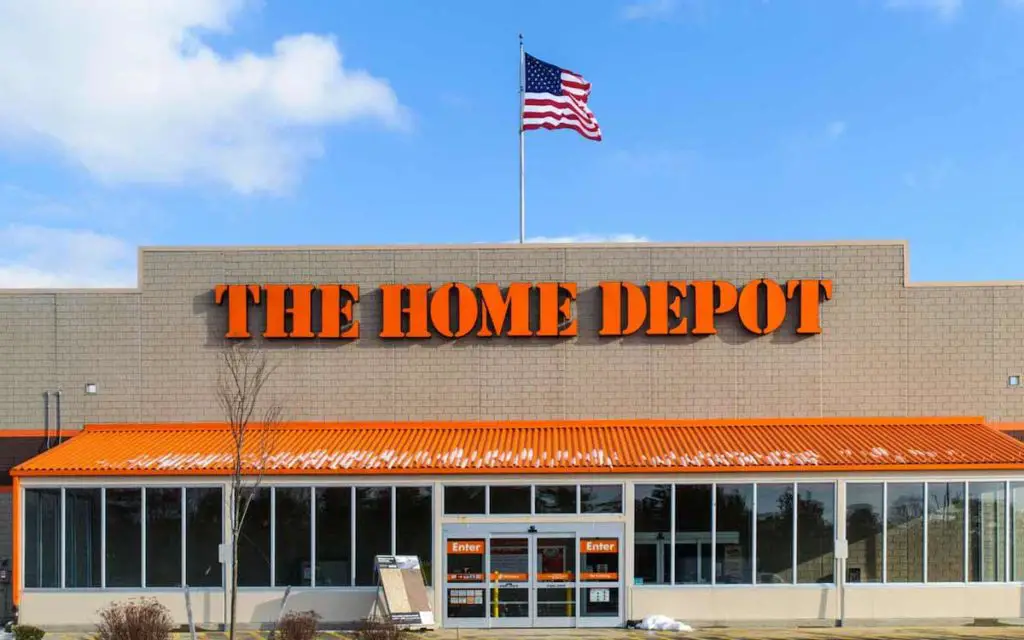Home Depot has RLC (Rapid Deployment Center) and SDC (Stocking Distribution Center) as a part of warehouse operations. Both RLC and SDC act as a flow for the products but do not store them. RLC sends the products to the vendors, and SDC sends the products to the stores. Thus, they ensure that the store does not get out of stock.

RLC and SDC are part of Home Depot’s supply chain and play a vital role in fulfilling the real-time demands. They help move the products from inbound to outbound sections fast. The number of distribution centers the company has is over 90. This article describes Home Depot’s RLC and SDC, their comparison, advantages, and challenges.
Home Depot RLC
The products arrive in packages at the large distribution centers called RLCs (Rapid Deployment Centers). The workers receive them from the suppliers at the inbound section.
Then, the following actions take place:
- Place the packages weighing less than 50 pounds on the conveyor belt.
- Receive them at the other end.
- Separate the individual products from the packets.
- Insert them in boxes so the retailers can open the boxes and sell the products individually.
- Forklift the boxes at the outbound section to send back to the vendors.
So, we can see that the products get sorted at the RLC. Workers with outstanding performance at RLC get a small reward.
Home Depot SDC
Earlier, the distribution of products to the retailers was not centralized in Home Depot. Every store had the burden of managing inventory. Since Home Depot SDC (Stocking Distribution Center) came into existence, the suppliers do not distribute packages separately to every store. This job gets handled by the SDC. The warehouse associates stock several heavy items such as furniture, flooring, toilets, and more. The General Warehouse Associates (GWA) must store large and seasonal products by using forklifts to distribute the products when required by the stores.
Comparing RLC And SDC
Home Depot has changed the supply chain to improve online and offline shopping. RLC and SDC got started to increase the market share and declining sales. Home Depot expects to decrease the expenditure and move inventory through RLC and SDC. Many retailers know the importance of supply chain management. Home Depot has only taken a long step towards it.
The following are the factors for comparing Home Depot’s RLC and SDC:
- At RLC, the whole process gets completed within a day, but at SDC, it might require up to three days.
- Since the workers must deal with larger packages at SDC than RLC, they find it more tiresome to work at SDC.
- RLC sends the products back to the vendors, whereas SDC sends the products to the stores.
- There are 18 RLC and 90 SDC Home Depot centers in North America.
Advantages Of RLC And SDC
The following are the advantages of Home Depot’s RLC and SDC:
- The supply chain gets vital for a giant retailer like Home Depot. Thus, RLC and SDC ensure enough stock of the products.
- Customers buy housewares and hardware from Home Depot because they like the price, quality, location, product range, and service.
- RLC and SDC help the store have better relations with the grocers, vendors, customers, and other stakeholders.
- Home Depot has adopted the supply chain management method like Lowe’s and seems to handle it very well.
- The store processes more units per hour in the case of incoming and outgoing products.
Challenges With RLC And SDC
The following are the challenges with Home Depot’s RLC and SDC:
- The warehouse associates must carefully manage the inventory. Since Home Depot is a project-driven retailer, customers might take the entire project down if they do not get a single product.
- The store must also stock the products required during sudden natural disasters like batteries, generators, and other products for an emergency.
- Having a stock of regular items is not enough. So, the store must also understand what other types of products the customers require.
- It puts unnecessary reliance on suppliers to maintain the stock. It might create an issue for the company if some key suppliers stop working with Home Depot for this reason.
Conclusion
Most things go according to the planning in the cases of Home Depot’s RLC and SDC, while only a few things happen by chance. Home Depot lives its values, and the workers feel proud of it. The two distribution centers mentioned in this article ensure that the store never runs out of stock. It can get efficient only till the workers sort out the correct products.
Frequently Asked Questions
- What Are Different Centers At Home Depot’s Warehouse?
Answer:
The following are the different centers at Home Depot’s warehouses:
- Market Delivery Center (MDC).
- Bulk Distribution Center (BDC).
- Direct Fulfillment Center (DFC).
- Market Delivery Operations (MDO).
- Flatbed Distribution Center (FDC).
- Rapid Deployment Center (RLC).
- Stocking Distribution Center (SDC).
- What Type Of Suppliers Does Home Depot Have?
Answer:
Earlier, Home Depot had only local suppliers. But, now it has suppliers from Canada and overseas. It represents the success of the initiative.


